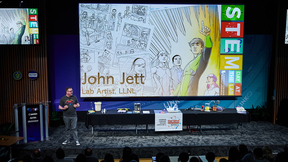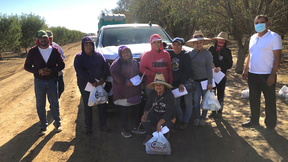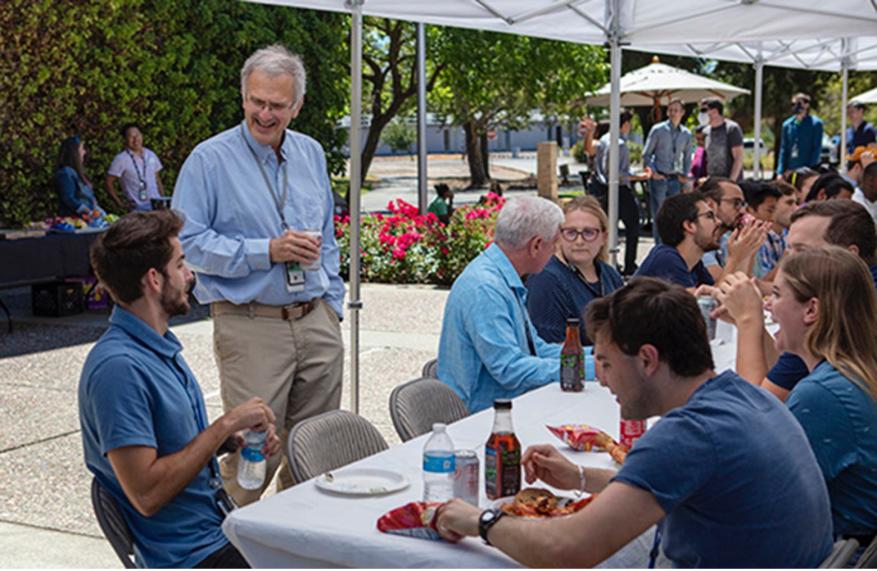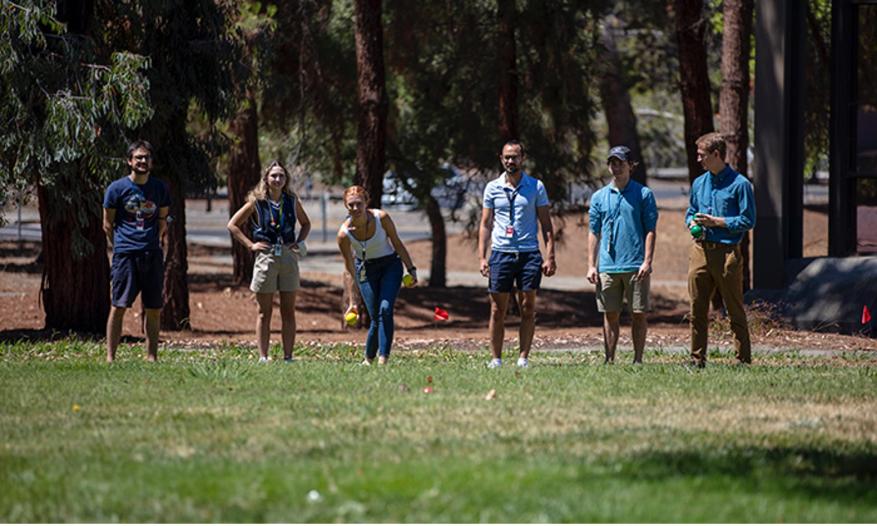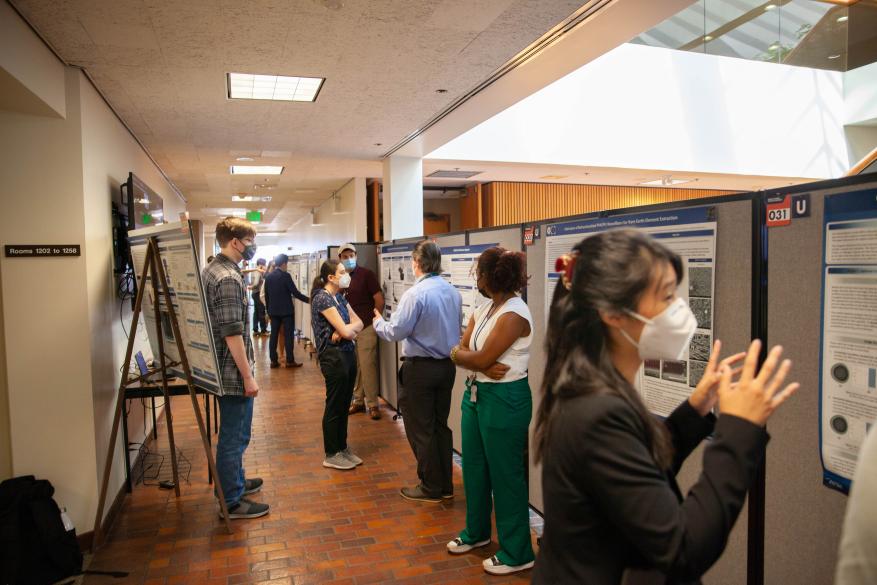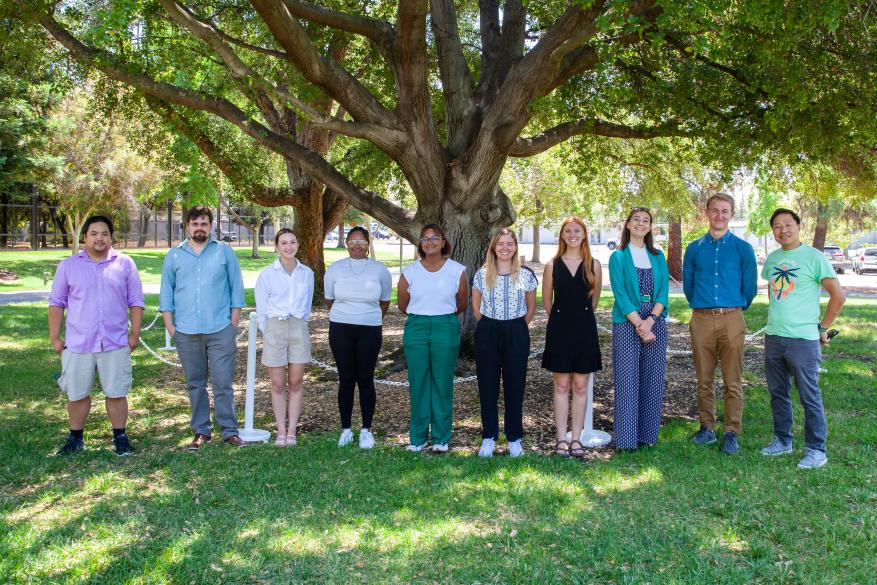NIF’s advances make Summer Scholar Program a coveted internship
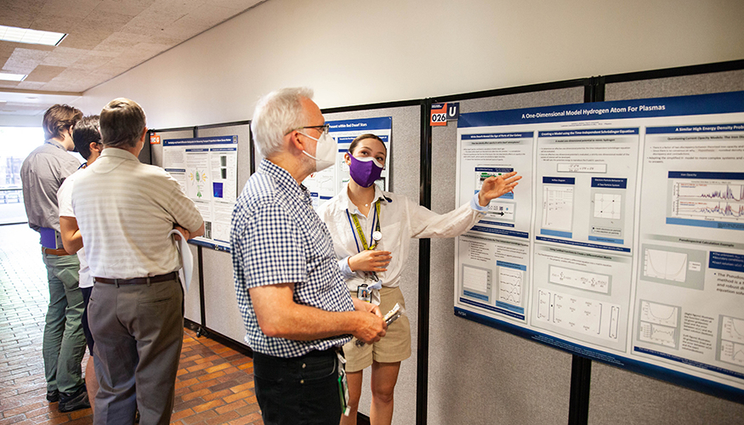 (Download Image)
(Download Image)
Isabella Martinez, a NIF&PS summer intern, explains her poster symposium entry to physicist John Moody. This poster contest, held in-person at LLNL last summer, attracted more than 40 entries. Credit: Mark Meamber
Lawrence Livermore National Laboratory’s (LLNL) National Ignition Facility’s (NIF) recent scientific advances, including the achievement of fusion ignition in December, have increased interest among aspiring young scientists for the NIF&PS Summer Scholar Program.
“That’s kind of the cool thing about this past year,” said Patrick Poole, the program director. “We had so many excited students that had heard about the cool stuff that had happened at NIF (the 1.35 megajoule milestone was reached on Aug. 8, 2021, putting NIF on the threshold of ignition), and the Lab in general. Business is booming, in that regard, and people are excited to come.”
Preparations have begun for this year’s NIF & Photon Science Directorate’s Summer Scholar Program, which is designed to prepare graduate and undergraduate students for experimental, theoretical and computational research in fields such as lasers and optics, plasma physics, software development, engineering and material science.
Each year, interns are paired with a research mentor and a project that coincides with the student’s research interests. Interns have the opportunity to interact with staff scientists, give oral presentations and learn about other research at LLNL — and immerse themselves in the Lab’s culture. The internships last for eight weeks on average.
The internship program had been forced to resort to a virtual format due to COVID-19 restrictions in 2020 and 2021. Last year, it adopted a hybrid format, with workshops, lectures and other social events held on campus and online. The vast majority of interns in the program came to the Lab, just as before the pandemic.
The hybrid format drew rave reviews from both interns and LLNL staff.
“Overall, I was very pleased with our NIF&PS Summer Scholar program this past year,” said NIF&PS Workforce Manager Zhi Liao, who oversaw the program. “I thought, given the challenging dynamics of the pandemic, the team was excellent in planning a hybrid summer program that was equally impactful, inclusive and immersive with its wide array of technical and social events. NIF&PS ran one of the few programs that had a majority of students onsite and the energy of the students and mentors was evident.”
NIF&PS Principal Associate Director Jeff Wisoff chats with a group of NIF&PS summer interns. Photo by Jason Laurea/LLNL.The internship program has proven itself as a key way for the Lab to attract and train new generations of scientists. Liao noted that four of the six scientists on a panel of experts who explained NIF’s Dec. 5 fusion ignition milestone after a Dec. 13 press conference at Department of Energy headquarters were former Lab interns (see “Panel Discussion: Nuclear Fusion Breakthrough”).
Those four — Alex Zylstra, the shot’s principal experimentalist; Annie Kritcher, principal designer and team lead for Integrated Modeling; Arthur Pak, team lead for stagnation science; and Tammy Ma, lead for the Laboratory’s Inertial Fusion Energy Institutional Initiative — all played key roles in the fusion ignition milestone.
“All of them credited participating in interning at LLNL as a key critical experience in their career trajectory,” Liao said. “Given their extraordinary success and the grand challenges that the Lab faces, this underpins the importance of our continued support of the summer internship program and the role it will play in the continued success of the Lab.”
For the 2022 summer program, more than 60 students interned at NIF&PS, with 28 students hired through NIF&PS, while the others came from other departments. In 2021, there were about 70 interns, and the decrease was because of the uncertainty caused by the pandemic. Summer scholar program organizers hope for a significant increase this year.
The activities included:
- Summer seminar series: A dozen lectures designed to give students insight into the breadth and depth of research at NIF and at LLNL. Topics included large scale optics for NIF, machine learning applications for the High Energy Density Science (HEDS) Center, progress in inertial confinement fusion (ICF) toward alpha heating and ignition at NIF and target fabrication at NIF.
- Coffee with an expert series: Six informal talks with Lab employees with diverse backgrounds, including a design physicist, laser physicist, software engineer and the deputy director of the HED Center.
- Virtual and in-person tours: A total of 10 tours, including NIF and the Goddard Space Flight Center in the Washington, D.C., area.
- Outdoor activities: Lawn games, including bocce ball, bean bag toss, Jenga stacking tower, as well as soccer matches.
The 2022 summer interns enjoy playing bocce ball, one of the lawn games held last summer at LLNL. It was the first time in three years that activities were held at the Lab for the NIF&PS Summer Scholar Program. Credit: Jason Laurea
Poole pointed out the “crowning achievement” of the summer program — the in-person, end-of-summer poster symposium, which attracted more than 40 entries.
In one of the NIF buildings, the printed posters were arranged along the hallways. Interns, NIF staff, mentors and judges milled about, examining the entries. Attendees could vote and put a sticker on their preferred poster. The winners were elected using a point system, and the judges weighed in with feedback for the students. To accommodate those attending remotely, a laptop with a 360-degree camera and microphone was set up next to the printed poster of each contestant.
It was a normal scene, but the logistics and work behind putting the poster symposium together was complex, and it represented a vast improvement from the version of the poster contest held online during the pandemic. Previously, students would present their posters via video conferencing in a brief, three-minute report before a panel of judges.
“Being able to organize in-person was an incredible opportunity,” said Alex Do, who was in charge of the poster symposium. “I was quite impressed by the level of the presenting students at the poster symposium.”
Do, a French citizen who arrived as a postdoc in plasma physics in 2018 and joined the Lab staff in 2021, jumped at the opportunity to participate in the summer scholar program.
“I firmly believe that it is very important to raise interest, train and help the next generation of students to get onto a successful path,” Do said. “What I want to pass along to the interns working at the Lab is not only about what they can bring to the Lab, but also what the Lab can bring to them. With the size and the broad range of skills available here, the students can discover a larger range of fields and might discover a new interest that will help them drive their career path.”
Payal Singh, a software developer in NIF Computing, served as the program’s discussion panel coordinator. She reached out to Lab speakers, arranged times for Lab experts to speak to the students and facilitated the hybrid meetings.
Singh, who interned at LLNL for four years in various departments, explained why she got involved with the NIF&PS Summer Scholar Program.
“I love talking with other young people at the Lab because I love hearing about their lives and what they’re passionate about,” she said. “Also, interning is really important. This can be such a pivotal time for people in choosing their future careers and goals and being even a small part of that journey is really exciting to me.”
Student interns display their entries at the poster symposium last summer. Photo by Mark Meamber/LLNL.Lab interns who experienced both the campus experience and the virtual setup during the pandemic drew comparisons — and said that having events in-person was far superior.
“The biggest difference I noticed in the summer is how fast I was able to progress with my work,” said Adeola Aghedo, a fifth-year physics Ph.D. candidate from Florida A&M University who mainly works with Lab scientists Félicie Albert and Dean Rusby. Aghedo began interning at the Lab in 2019 through the NNSA’s Minority Serving Institution Partnership Program (MSIPP).
“I also was able to interact with other students and attended some social gatherings,” Aghedo said. “I even participated in the weekly soccer games when I could.”
Aghedo’s summer project was continuing work on an analytical model for bremsstrahlung emission from short-pulse, high-intensity laser interaction with solid converters. Improvements were made to include the laser focal spot and pulse shape to have a more accurate electron spectrum.
Cameron Allen, a four-year Lab intern who is a Ph.D. physics graduate student at the University of Nevada, Reno, said he considers it “particularly lucky to have been able to attend even one summer, let alone four.”
In 2019, Allen’s first project as a NIF intern was X-ray Thomson scattering analysis of beryllium capsule implosions with his mentor, physicist Tilo Doeppner. The data was from NIF shots taken before Allen arrived and was primarily focused on small scattering angles to sample collective scattering, and to look at bulk density fluctuations in the plasma.
From 2020 onward, Allen has worked with Doeppner and others to develop a high-resolution X-ray radiography platform — called Fresnel Diffractive Radiography — for use at NIF and the Omega Laser Facility of the University of Rochester’s Laboratory for Laser Energetics. A variety of materials have been imaged at Omega using 1-micron-wide slits, and materials have been driven into warm dense matter conditions to watch how they evolved over time. The project’s goals were to demonstrate the high resolution, and to extract information regarding transport properties such as thermal conductivity in the warm dense matter regime, based on the time evolution.
In 2022, Allen focused on data analysis from shots taken the previous year and was planning for upcoming shots on Omega and NIF.
“There is certainly a benefit to working in person as opposed to remotely,” Allen said. “For my first summer at the Lab, I was introduced to a completely new topic that I was unfamiliar with and being able to sit with my mentor face-to-face to discuss things was invaluable. Likewise, talking with other scientists at the Lab and gaining more information in a fluid, natural way was fantastic. It is much harder to have spur of the moment ‘let’s go talk to so-and-so about this’ conversations when it’s (video conferencing) meetings only.”
The NIF&PS summer poster symposium winners pose with NIF staffers, including Alex Do, at far left, who was in charge of the symposium, and Zhi Liao, right, NIF&PS workforce manager. The students are, from second left, Surge Mistyuk, Isabella Martinez, Ashleigh Wilson, Jalyn-Rose Clark, Emily Rettick, Laura Sawyer, Mary Ann Mort, and Brendan McCluskey. Missing is Brian Hassard, the remote poster contest winner. Photo by Mark Meamber/LLNL.Allen returned to LLNL last summer and said he enjoyed “interactions with the other interns in meetings, colloquia and presentations. It was great to see so many people on-site again, and the Lab felt full of life.”
He also praised LLNL’s culture.
“I have largely been a fan of the Lab's culture and environment since I started,” Allen said. “It is certainly much different to a university, or at least my experiences at university. Whole hallways with scientists that are readily willing to discuss topics, collaborate and help out feels like a breath of fresh air, especially coming from departments that can feel a bit more closed off. Being able to walk down the hallway and just chat with a world expert on a particular topic is kind of crazy from the outsider perspective. Most people seemed genuinely happy, and I greatly enjoyed my years onsite at the Lab.”
Poole said that preparations for this year’s program are in full swing. The process has begun to recruit Lab mentors and student applications are about to be reviewed. And the hybrid format is here to stay.
“We don’t want to remove online as an option,” he said. “For people who can’t travel, or if they’re in other countries, it will be challenging for them to do so.”
Liao thanked the entire NIF&PS Summer Scholar Program team, singling out Poole and Program Administrator Danyelle Asbe for their work.
“I want to thank the entire summer scholar team, but especially Danyelle and Patrick — Danyelle for stepping into the role so effortlessly and already making her impact on the program and Patrick for keeping a steady hand on the program while injecting new ideas and energy,” Liao said.
The NIF&PS Summer Scholar Program team for 2022 included: Liao, Poole, Asbe, Tom Braun, Dave Schlossberg, Singh, Do, Pamela Newcomb, Caitlin Menniti, Tris Sunardi, Shahab Khan, Jackson Williams, Maria Sepulveda and Deborah Bradford.
– Jon Kawamoto
Contact
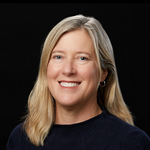 Patricia Koning
Patricia Koning
[email protected]
(925) 423-4332
Related Links
NIF&PS Summer Scholar ProgramTags
Lasers and Optical S&TLasers
National Ignition Facility and Photon Science
Science
Careers
Community Outreach
Featured Articles
